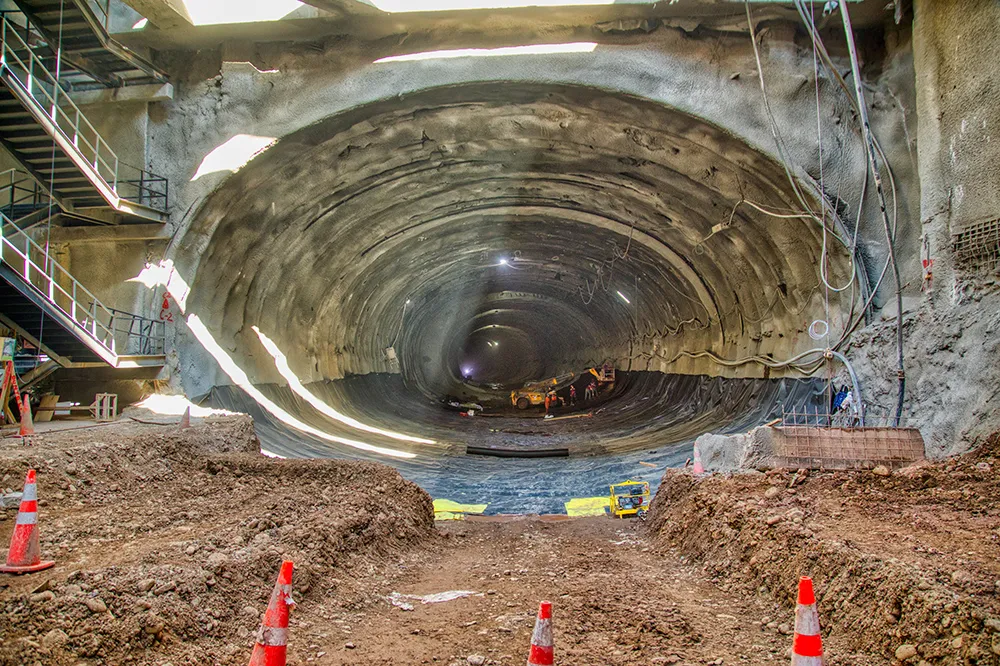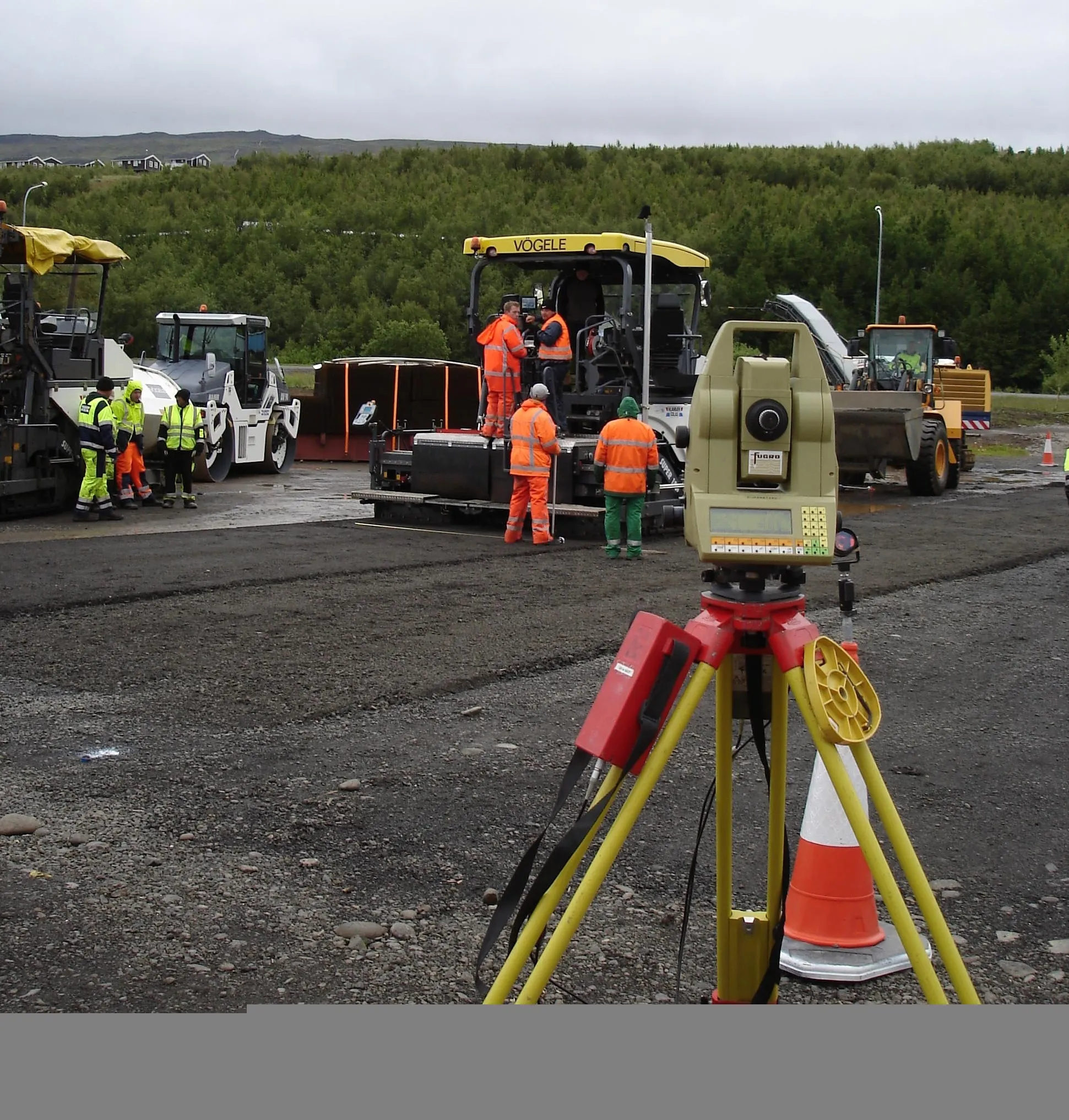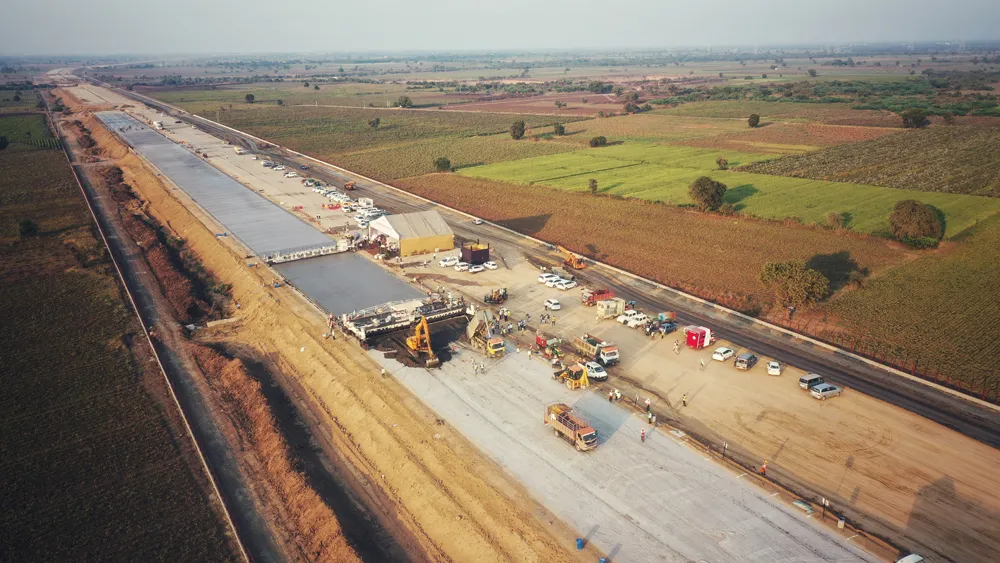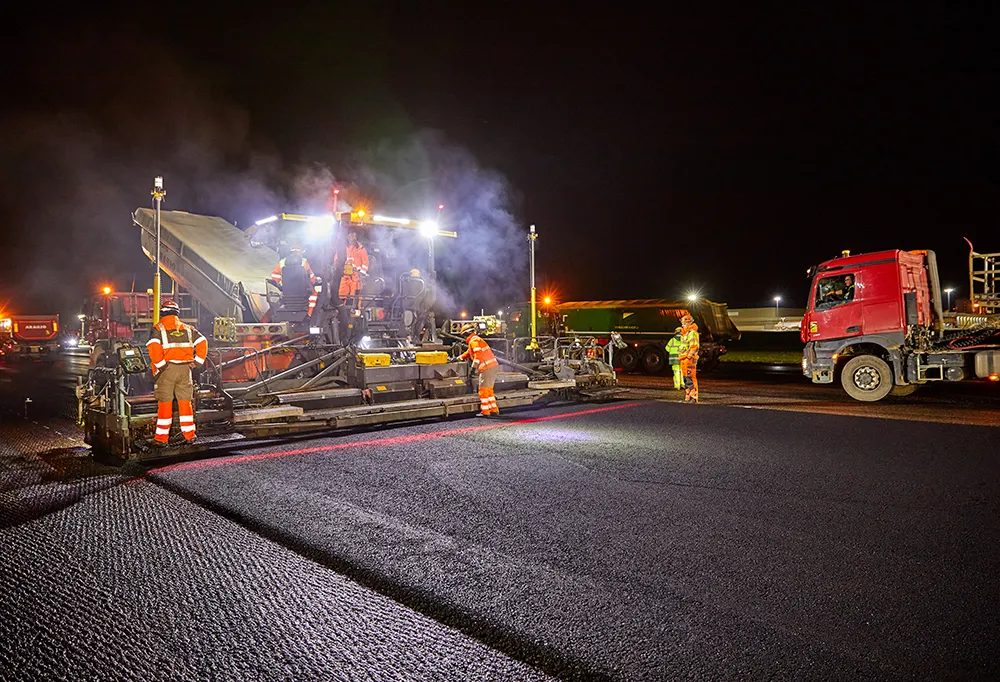
The airport operators needed to complete the runway reprofile without disrupting scheduled take-offs and landings. With an eye on speed, flexibility and quality, the operators opted to lay a series of new asphalt layers over the existing runway. Milling machines were used to rectify the profile of the runway, with asphalt pavers then being used to lay the asphalt layers each night. The runway then reopened each morning for normal airport operations to resume during the day.
This was a complex project with no room for delays, but it went to plan. The plan was achieved due to the combination of a skilled team, 3D machine guidance, technology from Trimble and support and training provided by Trimble distributor, SITECH France.
The airport allotted the construction firms a slot at night from 11pm - 6am to carry out the runway reprofiling project. The work would be carried out over 210-220 nights and with two paving periods, one in 2021 and one in 2022.
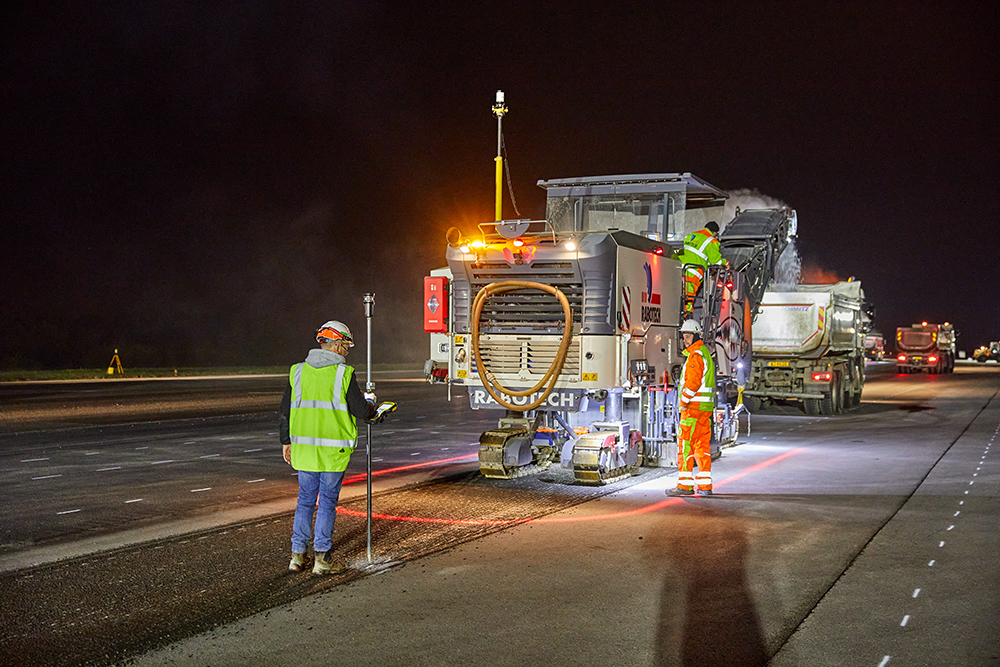
The partners of the *SOMO Findel Airport Consortium that won the tender process based the plan on the use of 3D guidance for milling and asphalt laying operations. “Karp-Kneip believes in the benefits of our technology,” explained Norbert Mattivi, business development manager for Trimble civil construction. “As a user of guidance systems for its excavators, graders and bulldozers, the Luxembourg-based company has also adopted Trimble's 3D machine control solutions for its milling subsidiary Rabotech, which supplies the site's machines with Colas.” "It was not possible to carry out this project without 3D machine control, with a classic workflow," added Christophe Latteur, head of the Karp-Kneip surveying department. “We knew Trimble equipment and how it worked.” “And we had tested its reliability,” added Clément Larher, project director for Colas Projects, which bought a kit for a milling machine. SITECH France installed the device and also acted assisted in the planning and use of 3D systems, with the simultaneous operation of a large number of machines. “We had to train the new operators and be onsite for the first two to three night operations,” said Damien Grosjean, application engineer at SITECH France. High precision targets The runway project began with the generation of a digital model based on a mobile mapping, point cloud survey of the runway by a subcontractor. Using the digital model, the team was able to set out a daily work schedule.
The construction team then equipped the fleet of milling machines and asphalt pavers with 3D machine control technology. This system featured a Trimble CB460 Control Box and MT900 Machine Targets. Equipment needs varied during the project, with two Wirtgen W200 and two W210Fi milling machines in use as well as up to eight Vögele Super 1800-3 and Super 2100-3 pavers in operation each night. More than 16 Trimble SPS930 Universal Total Stations were mobilised for guidance and control of the work performed. “Our total stations are equipped with a very high precision CDD sensor. The signal emitted by the SPS930 and reflected by the target gives an altimetry accuracy of 1mm at 200m,” said Mattivi. The total stations transmitted the position of the prisms in x,y,z coordinates 10 times/second to the CB460 Control Boxes via radio. In addition to this system, there were Trimble TCS3 and TCS7 Controllers for setting up total stations, and for checking the level of the milled and paved surfaces. T
The entire operation required more than 240 people and over 100 machines and trucks to complete.
Every night, at 11pm, the total stations were set up to control and guide the machines. “The most impressive thing is this rush, at the sound of the horn, every evening at 11pm,” explained Larher. “Each MT900 emits a coded unique LED signal picked up by the total station responsible for tracking this target,” said Mattivi. Latteur added, “Each station follows only one prism, and finds it, even if a truck passes between the two.” In addition, the total stations are positioned behind the pavers and on tripods 3m high to avoid any interruption of the beam by the compactors at work.
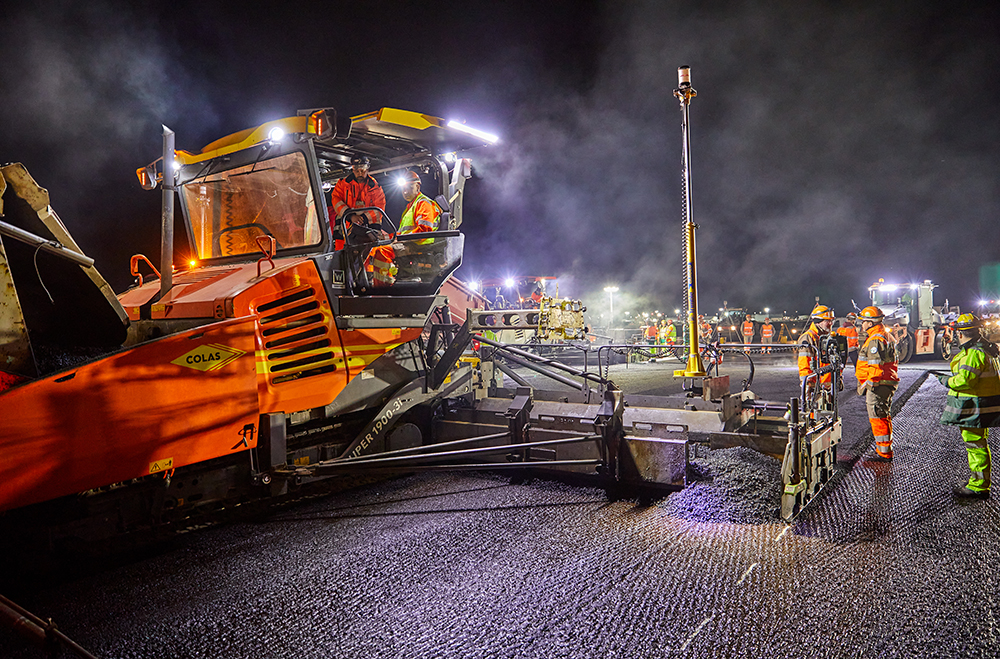
The areas to be milled, about 2m wide depending on drum width, are marked each evening by the TinyRobots, an autonomous line pre-marking solution, equipped with a Trimble SPS986 GNSS Smart Antenna. The milling machines guided by the Trimble PCS900 Paving Control System can then come into play. “Then we treat the sides of the first zone to cover the entire width of the track,” explained Larher. “These machines have a single mast carrying the MT900 prism,” said Mattivi. “We thus have an altimetry point which, combined with a Trimble GS420 Machine Control Sensor, allows a milling precision of ±3mm for work up to 25m/min.” Then, after sweeping and application of the bonding emulsion, crews could lay the asphalt. However, this operation was only triggered after surveying, as progress was made, of the milled depths.
The pavers worked in groups. The first, guided in 3D on both sides, worked to the left of the axis of the track, and gave the level and slope over a width of 10m. The second, also equipped with a 10m screed, worked on the right, taking its reference from the left using a sonic system on the layer placed by the first. On the right, it was guided by 3D. This pattern continued until crews covered the entire width of the track. At the end of the project, ramps were made according to international standards for airport runways (1% maximum). “We apply between two and seven layers of asphalt, 4.5cm thick, for the wearing course at a maximum of 10cm,” specified Larher. “The amount depends on the areas and the gap between the old profile and the target profile. At most, we will have laid 37cm of asphalt.” Every night, crews completed from 150-300m of new surface.
The supply of asphalt for the pavers was provided by two plants close to the site and there were some complexities for the logistics as well. "In fact, in the time slot allocated to us, the milling finished around 1:30 am, there are 2:30 hours left to lay the asphalt and compact it, because it takes two hours for the asphalt to cool down from 160°C at the time of application to 60°C, the maximum allowable for the reopening of the track,” specified Larher. On average, 2,500tonnes of asphalt were laid/night, equivalent to 60-65 trucks, not counting those that remove the milled material from the milling machines, continues the project director. “Not all trucks had time to return to the asphalt plant. Trucks average 1.6 laps,” he added. "That’s another advantage of having a 3D model,” said Mattivi. “Not only for accurately meeting specifications of the project, but also for calculating the necessary quantities of asphalt to be produced, transported and applied each night.”
“When we leave the runway, to make way for the first cargo planes to land, it's as if we had never been there. But the equipment is ready for work the next night,” concluded Latteur.


